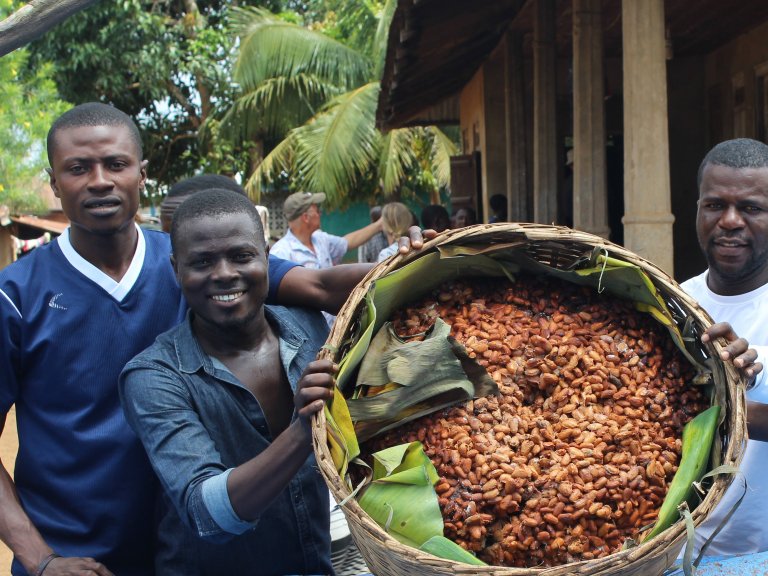 ©RSPB
©RSPB
How sustainable cocoa is bringing new hope for forests and people in West Africa

Protecting 25 million trees across 370,000 hectares of threatened rainforest on the borders of Sierra Leone and Liberia

Supporting thousands of local and indigenous sustainable cocoa growers and their families and communities

The project aims to sell 200 tons of forest-friendly Gola cocoa to premium markets around the world each year
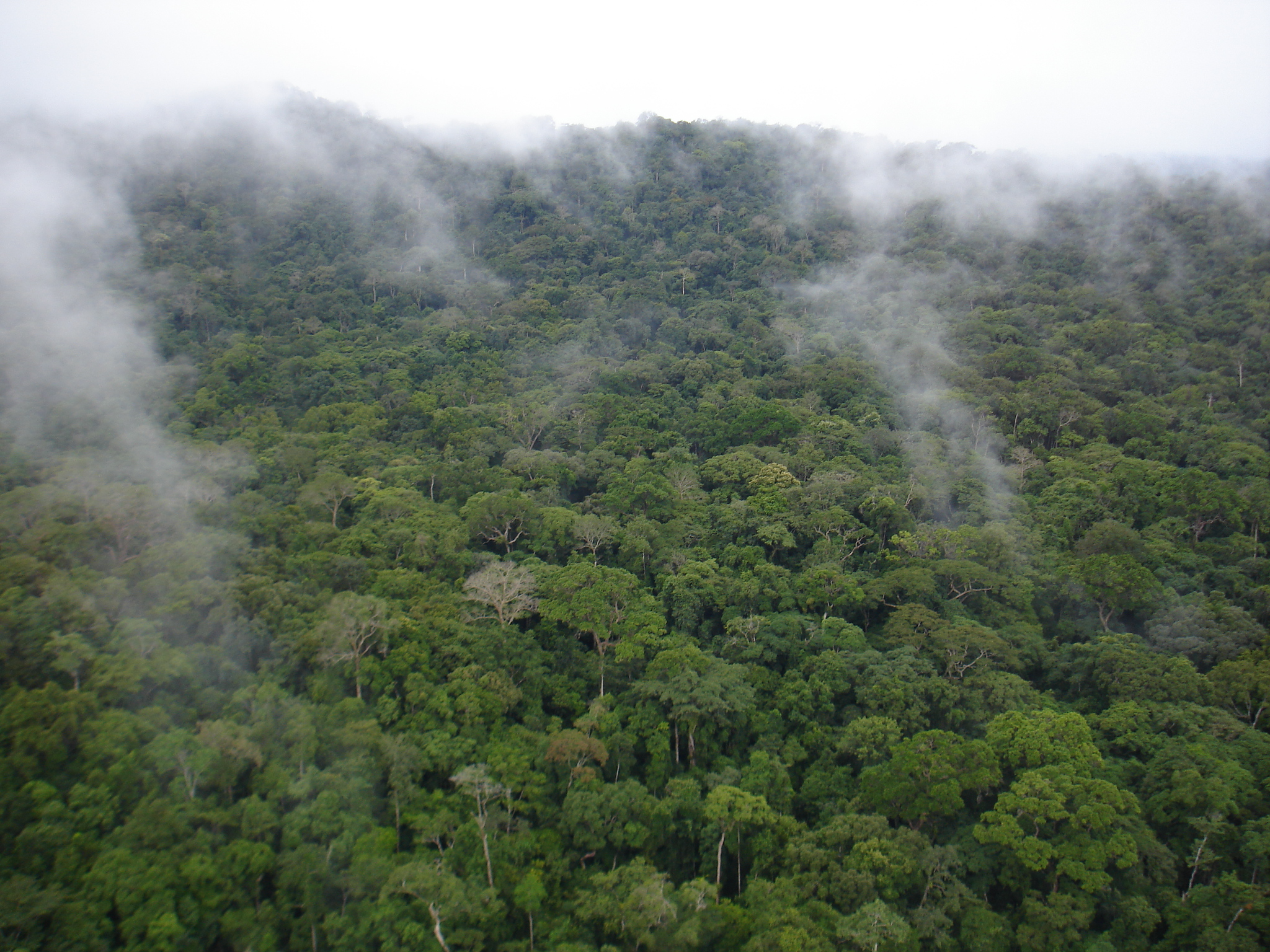
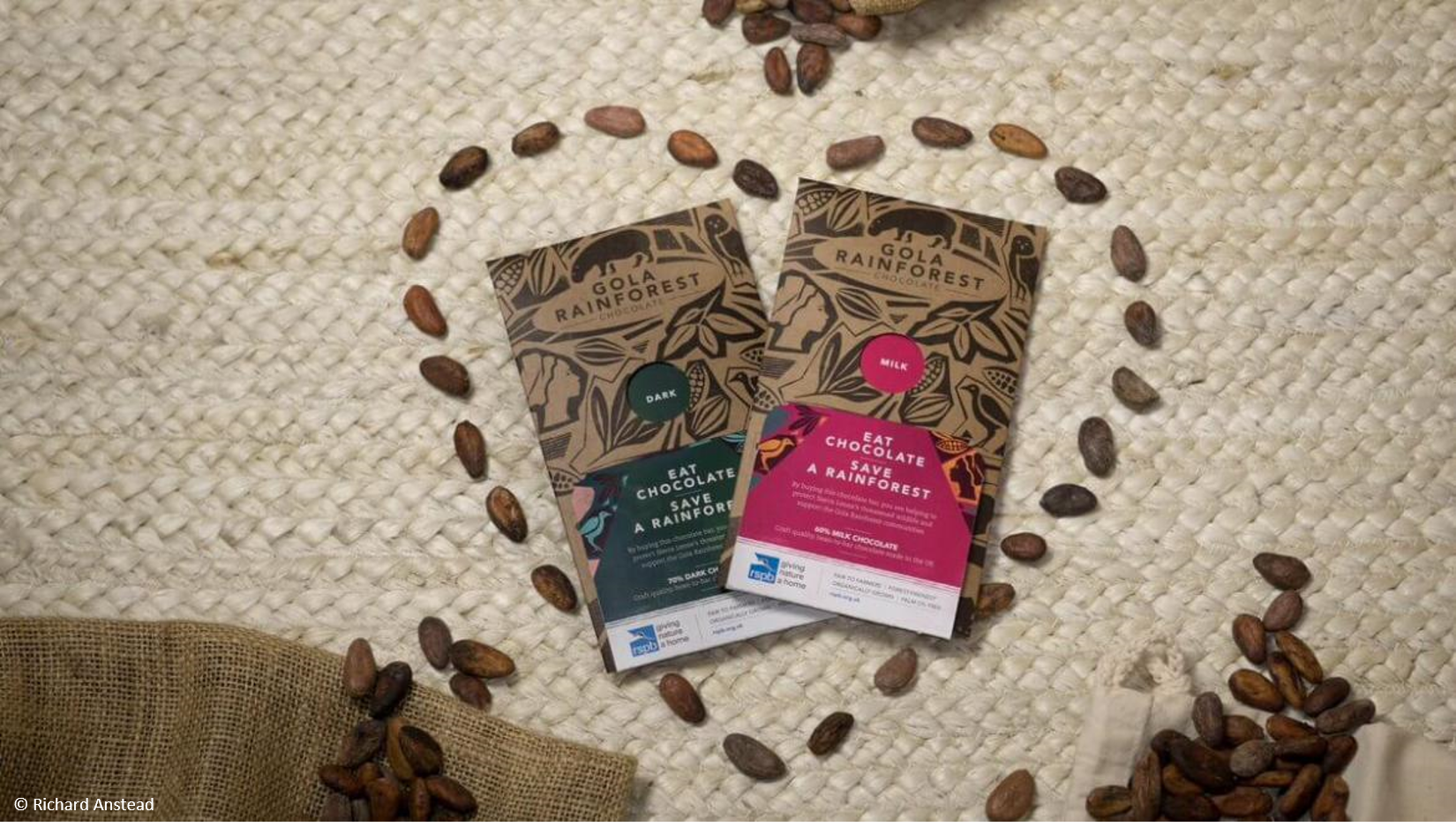
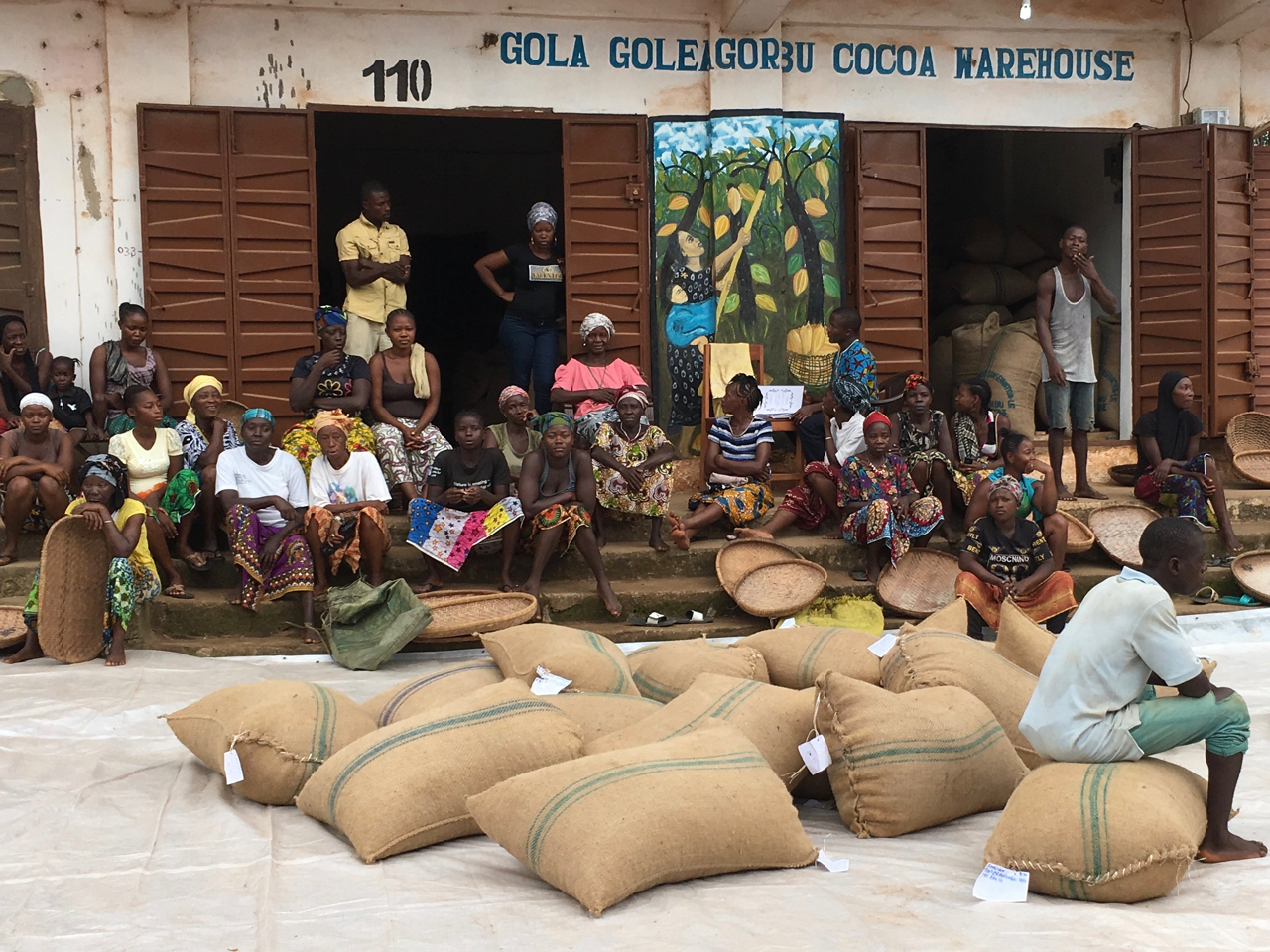
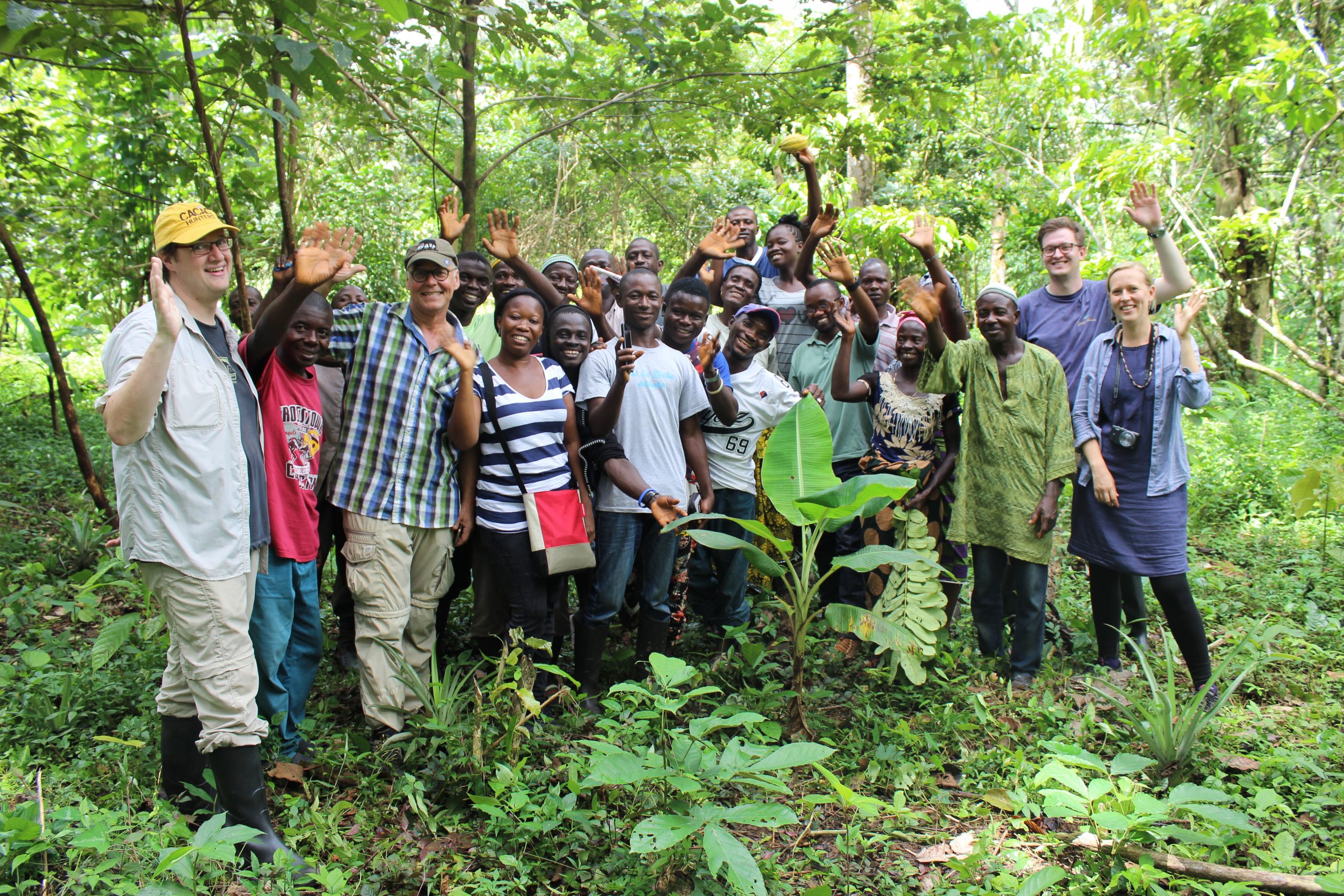


Established partnerships with governments and NGOs, assisted in creation of national parks, supported the first REDD+ carbon credit programme in West Africa, first community protected forest corridor in Liberia, helped develop Gola rainforest cocoa, and supported sustainable livelihoods for over 28,000 people.
Trillion Trees partner BirdLife International has been working in this region for over 30 years, operating through the Conservation Society of Sierra Leone and UK BirdLife partner, the Royal Society for the Protection of Birds (RSPB). The hard work and long-running partnership of NGOs, governments and local communities across both countries has resulted in the creation of two protected areas – the Gola Forest National Park in Liberia and Gola Rainforest National Park in Sierra Leone. We have also seen the first official REDD+ carbon credit program in West Africa, with revenues benefiting local communities. This scheme has avoided 5 million tons of CO2 emissions over a decade.
In 2015, BirdLife and local partners began to develop a community-run cocoa business. This is an effective way for forest protection to become a serious business opportunity for the 140,000 indigenous Ngoleagorbu living around the edges of the Gola forest. By 2018, this democratically-structured organisation was successfully exporting 40 metric tons of high-quality sustainable cocoa around the world. With the Ngoleagorbu Cocoa Farmers Union becoming Fairtrade-certified, they receive an additional premium price on top. In the process, this forest-friendly cocoa farming helps create ecological connectivity between fragments of the Gola rainforest, improving habitat for endangered species.
In 2020, we celebrated the historic signing of an agreement between Sierra Leone and Liberia to collaborate in managing the Gola forest. Among other things, this enables transboundary, joint training of rangers in protected areas, and joint patrols across hundreds of thousands of hectares. Further investment is now needed to help expand the Gola forest project into Liberia long-term.
Supporting community cocoa farmers, promoting sustainable farming, training and monitoring, more marketing of Gola cocoa, more REDD+ carbon credits, enabling carbon emissions reduction targets, more transboundary collaboration, preserving biodiversity and wildlife habitats.
Locally-tailored approaches in the Gola forest include encouraging sustainable agroforestry. The flagship initiative is forest-friendly shade-grown cocoa. The cocoa trees are strategically planted beneath leafy shade trees, which birds love. Alongside them may be nitrogen-fixing trees and plants for soil fertility, and other appropriate and beneficial fruit and vegetable crops.
The project involves thousands of cocoa farmers, specifically indigenous Ngoleagorbu people. Cocoa has been grown in this region for generations – but the farmers and field workers never used to see much benefit. They might have received as little as 3% of the cocoa’s value. This project invests in forest-friendly cocoa that brings long-term returns for local people – and nature.
The Cocoa Farmers cooperatives are founded on democratic principles. Farmers register, pay subscription fees and elect leaders to manage the business and finances. The project supports them with training, equipment and technical advice. From their forest-edge smallholdings, the farmers take their harvested cocoa to local processing sites, then to a buying centre. Each centre is equipped with scales, a receipt book and a published price per kilo of cocoa. Farmers had not seen even this basic level of transparency before. Previously they could often be exploited by external traders.
Gola forest-friendly cocoa, which has the additional benefit of being Fairtrade-certified, is then sold to international buyers and used in popular products such as chocolate bars and ice cream. The aim is to export 200 metric tons of Gola cocoa to premium markets annually. The income generated is divided between supporting the farming community and reinvesting into forest friendly cocoa business. We also plan to step up the scale and effectiveness of international marketing for Gola cocoa products. In Liberia, work is underway to scale up the sustainable cocoa initiative across the whole Greater Gola Landscape.
Around 40,000 people in over 120 forest-edge communities are being supported and empowered by the project, and they are seeing more than 50% increase in income. Education, health and gender equality metrics are all positively affected.
The Greater Gola Landscape, spanning the border of Sierra Leone and Liberia, is one of the largest remaining tracts of the Upper Guinean rainforest biome of West Africa.
The stunning Gola rainforest landscape is an internationally recognised biodiversity hotspot. It is home to 60 globally threatened species – including mammals such as ‘pygmy’ hippos, western chimpanzees, forest elephants and leopards. Along with 600 types of butterfly, more than 2,000 kinds of plants and 43 amphibian species, and 327 different birds, including the white-necked picathartes (bald-headed rockfowl).
In these poverty-afflicted regions, as much as 90% of people’s livelihoods depend on natural resources and subsistence agriculture. This puts the forests under extra pressure. Exploitation of this lush landscape has led to vast tracts being lost to intensive agriculture (often including cash crops like cocoa), as well as iron ore and other mining, and widespread indiscriminate logging. Without intervention, the rate of deforestation here will cause irrevocable damage. Not only jeopardising entire populations of endangered species, but also the full range of ecosystem services that the forest provides.
It is essential that all conservation approaches support local people to develop economically and ecologically-sustainable livelihoods. Such as our small-scale cocoa farming projects, working in harmony with the forest.
Lead Trillion Trees Partners: BirdLife International with RSPB
Conservation Society of Sierra Leone
The Society for Conservation of Nature in Liberia